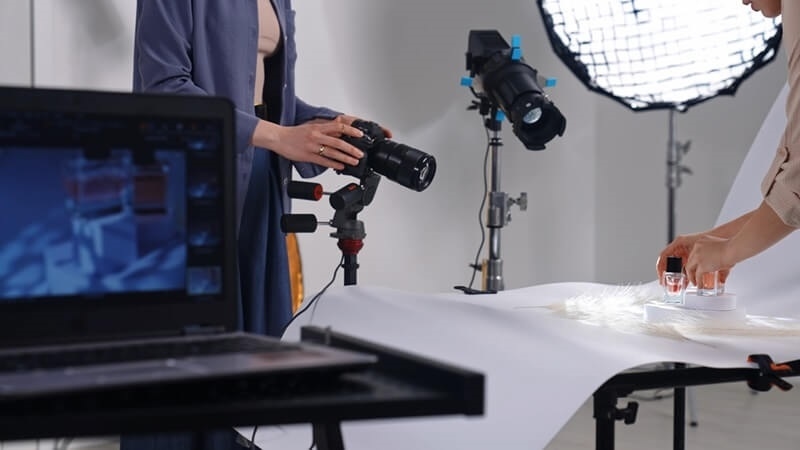
Anyone can press a shutter button. But turning that quick click into an image that makes someone stop and stare—that’s a different story. That’s where composition in photography comes in.
Composition is the secret sauce. It’s not about expensive gear or exotic locations. It’s how you arrange what’s inside the frame. Get it right, and even the most ordinary subject feels powerful. Get it wrong, and even a golden sunset looks… meh. The good thing? You don’t need years of training to improve. A handful of simple tricks can elevate your photos instantly.
So let’s explore practical, beginner-friendly ways to make your shots stand out.
A good photo isn’t always about sharpness or megapixels. It’s about connection. Composition is the structure that guides a viewer’s eyes, creates balance, and tells a story without words.
Think about it: have you ever seen a blurry, imperfect photo that still feels moving? That’s the magic of composition. It’s not about perfection—it’s about impact.
Ah, the golden rule. Everyone’s heard of it, but do you actually use it? Imagine your frame divided into nine equal boxes by two vertical and two horizontal lines. Place your subject along those lines or where they intersect. Instantly, the shot feels more natural and balanced.
That’s rule of thirds explained in its simplest form. And here’s the kicker—you don’t always have to follow it. Sometimes breaking the rule (like centering your subject) can create drama. The trick is to know it first, then break it with intention.

For someone just starting, the idea of composition can feel overwhelming. But it’s really about small choices. Move a step left. Kneel down. Change perspective. Suddenly, the shot transforms.
When you explore composition in photography, think less about rules and more about awareness. Where are the lines leading? Is there clutter in the background? Does the subject pop? Every little decision adds up to an image that feels intentional.
Framing isn’t just for walls. In photography, framing means using natural elements to draw attention to your subject. Doorways, windows, trees, even shadows can all act as frames.
The beauty of easy framing tips for photos is that they’re everywhere once you start noticing. A simple archway can add depth. A gap between two buildings can highlight a person walking. It’s about training your eyes to see shapes, not just subjects.
Most people shoot straight-on, eye-level, because that feels natural. But tilt your camera up, crouch down, or shoot from the side, and suddenly the whole mood changes.
That’s why guides often suggest experimenting with best angles for photography beginners. Looking up makes subjects look grand and powerful. Shooting from above creates vulnerability or intimacy. Even a slight tilt can make an ordinary scene look artistic. Don’t be afraid to play around—it’s free, and it teaches you faster than any manual.
Ever capture a great subject only to realize later that a trash can or stranger ruined the background? Yep, we’ve all been there. Backgrounds matter more than most beginners realize.
The trick with improving composition with backgrounds is simple: check the whole frame before pressing the shutter. Shift a little left or right to hide distractions. Blur the background with a wide aperture if it’s messy. Or, use the background to add context—a bustling café for a portrait, a city skyline for street shots. The background isn’t just “behind”—it’s part of the story.
Balance isn’t about symmetry. It’s about how heavy or light elements feel in the frame. A single person on the left might need a tree, shadow, or another subject on the right to feel balanced.
Using photo balance tricks can make your shots more harmonious. Leading lines, repeating patterns, or contrasting colors all help balance the visual weight. And sometimes, imbalance is the trick—placing everything off-center can create tension that pulls viewers in. Balance doesn’t always mean calm. Sometimes it means energy.
Lines guide the eye. Roads, fences, rivers, even rows of bookshelves—all of these can act like arrows pointing toward your subject. Leading lines give direction and structure, turning chaos into clarity.
Experiment by placing lines diagonally instead of horizontally—it adds more dynamism. Once you start noticing lines, you’ll see them everywhere.
Composition isn’t just shapes and positions. Light itself frames your photo. The way shadows fall, the contrast between highlights and dark spaces—these can all lead the eye and create mood.
Play with natural light at different times of day. Morning light is soft, evening light is golden, midday light is harsh but dramatic. Shadows can either hide details or add mystery. The more you experiment, the more you’ll see light as part of composition.
Beginners often try to fill the frame. But sometimes, leaving empty space is more powerful. Negative space around a subject emphasizes it, makes it breathe, and gives your photo a minimalist elegance.
Think of a bird flying in a vast sky. Or a single tree on an empty plain. That empty space isn’t wasted—it’s what makes the subject matter.
At first, thinking about composition feels like juggling too many balls. Rule of thirds, framing, lines, balance, backgrounds—it’s a lot. But the more you shoot, the more it becomes instinct. You won’t even notice yourself adjusting until suddenly your shots just… look better.
And remember, there’s no perfect formula. Some of the most iconic images break every “rule” in the book. The point of these tricks is to help you see differently, not box you in.
Composition isn’t only about shapes, lines, or angles—colors play a huge part too. Warm colors like red and orange instantly grab attention, while cooler tones like blue or green calm things down and create balance. Learning to use contrasting colors can make your subject pop, even in a crowded frame.
Think of a red umbrella in a sea of gray coats—it stands out because of the contrast. When you’re experimenting with composition in photography, train your eyes to notice how colors interact. Sometimes shifting your angle slightly can change the way colors align and transform the entire mood of the photo.
So where should you start? Pick one idea per outing. Try only framing one day. Experiment with angles the next. Focus on negative space for a week. Slowly, these building blocks come together, and you’ll see your style forming.
Because at the heart of photography, it’s not about following guides—it’s about noticing. Noticing how things line up, how shadows fall, how one small shift can turn “meh” into “wow.”
This content was created by AI